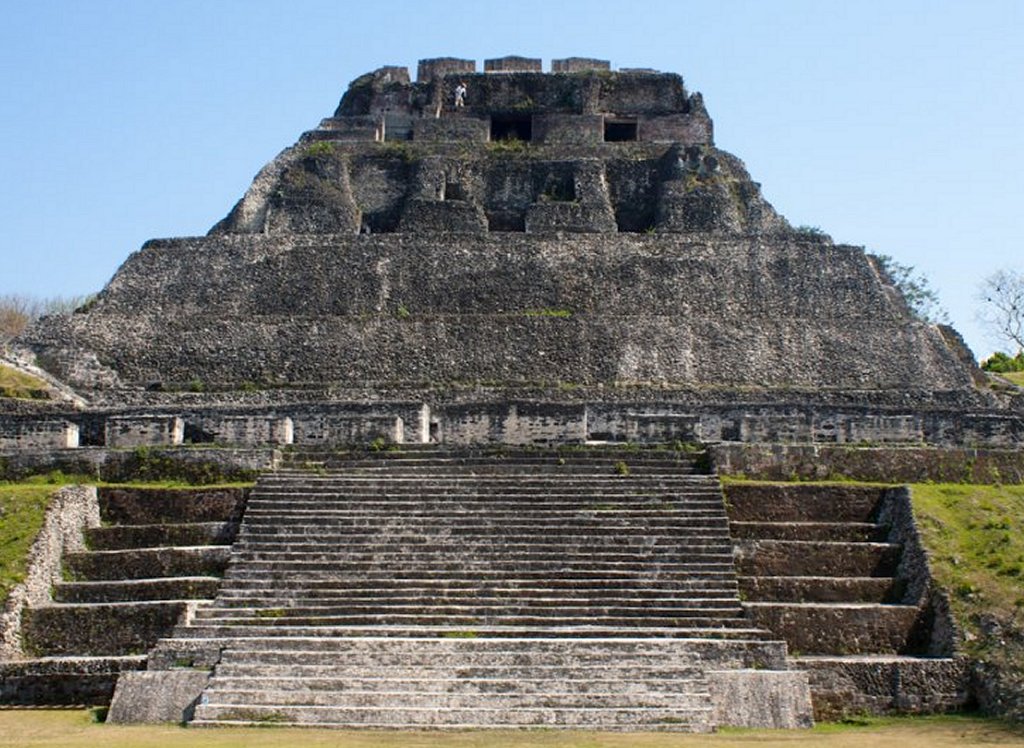Ruins Of Xunantunich – Mayan City That Once Flourished
A. Sutherland - AncientPages.com - Xunantunich, a major ceremonial center of the Maya Civilization, is an ancient Maya archaeological site atop a ridge above the Mopan River, about 80 miles (130 km) west of Belize City, Cayo District, in western Belize.
"El Castillo" at Xunantunich. Photo credits: Denis Barthel - CC BY-SA 4.0
It comprises six major plazas, surrounded by over twenty-five temples and palaces.
The name 'Xunantunich' derives from the Yucatec Maya language and means 'Stone Woman' (or "Lady of the Rock"). It is a modern name; its ancient name is currently unknown.
Local legend holds that around the end of the 1800s, a man from the village of San Jose Succotz went hunting near the site and suddenly saw a beautiful statuesque Maya maiden standing motionless in the rays of the rising sun near the mouth of a cave, which extended beneath the giant structure.
Stricken by her appearance, the man threw his gun aside and ran downhill to the village. After recounting his tale, several villagers led by the native priest returned to the site.
Arriving at the large mound, they found the mouth of the tunnel, but the stone maiden had disappeared. After that, locals claim that the woman has appeared to several others, but none have been able to follow her into the cavern.
Xunantunich was first explored in the 1800s by Dr. Thomas Gann, a British medical officer who later returned to the ancient place. As records state, he unearthed many Maya treasures, the history of which have been lost and the whereabouts unknown.
The place was occupied perhaps as early as 300 B.C., but most of the Maya architecture there was developed in the late classic period. Later, the inhabitants of Xunantunich continually built new temples and residences over older buildings, enlarging the ceremonial center by raising the platforms and structures in the process.
Xunantunich has a very representative structure known as The Castle (El Castillo), which is the second tallest pre-Columbian building in Belize after the Temple of El Caracol, reaching a height of 40 meters from; it offers from the top an impressive view of the jungle canopy, the other ruins, and even beyond the border.
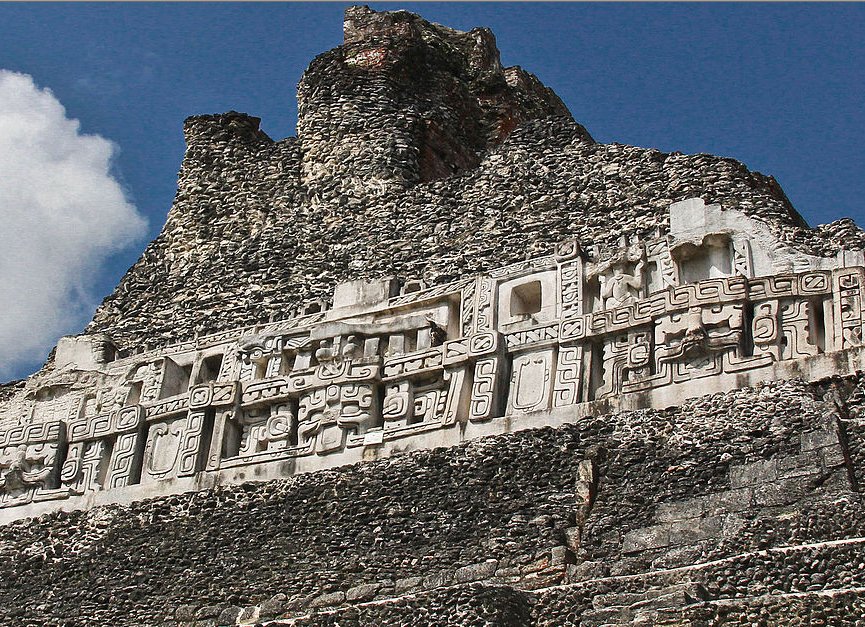 Carvings on the peak of the El Castillo pyramid (Structure A6) at Xunantunich, Belize. Image credit: cjuneau - CC BY 2.0
Carvings on the peak of the El Castillo pyramid (Structure A6) at Xunantunich, Belize. Image credit: cjuneau - CC BY 2.0
The site's name comes from the Yucatec Maya for Stone Woman and is a modern name, like those given to many other archaeological sites in Mesoamerica. Old names still need to be discovered. According to Belizeans, the stone woman refers to a ghost that lives in the archaeological zone. The ghost is all black, and his eyes are lit like fire.
The figure usually appears before the Castle and then ascends the stone steps to disappear into the stone wall. After Xunantunich ceased being a famous ceremonial and civic center, some people continued to occupy its area or perhaps reoccupied it. The excavations of Xunantunich have confirmed that the Maya people lived in the Belize region for centuries.
Later, extensive archaeological work was done in Xunantunich, now an impressive, well-excavated, and easily accessible Mayan site.
Xunantunich was a thriving Mayan city during the Classic Period. The hills were first occupied between 400 BC and 200 BC, and it was in 600 AD that Xunantunich was first used as a ceremonial site, making the entire site some 1400 years old. The site has an ancient ball court where intense pok ta pok ball games were organized, and the loser of the game faced sudden death.
However, the Maya warriors often lost their heads regardless of whether they won. Not far from Xunantunich, there is a mysterious cave that was important for Mayan rituals and human sacrifice.
Interestingly, during a time when most of the Mayan civilizations were crumbling, Xunantunich was managing to expand its city and its power over other areas within the valley. Around 1000 AD, however, Xunantunich was abandoned.
Written by – A. Sutherland - AncientPages.com Senior Staff Writer
Updated on January 14, 2024
Copyright © AncientPages.com All rights reserved. This material may not be published, broadcast, rewritten or redistributed in whole or part without the express written permission of AncientPages.com
Expand for referencesMore From Ancient Pages
-
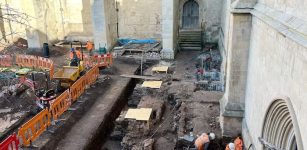 Ancient Roman Street And Buildings Discovered Beneath Exeter Cathedral
Archaeology | Apr 4, 2023
Ancient Roman Street And Buildings Discovered Beneath Exeter Cathedral
Archaeology | Apr 4, 2023 -
 Mysterious Hakkari Stelae: Were They Carved By Inhabitants Of Ancient Kingdom Of Hubushkia?
Artifacts | Nov 15, 2018
Mysterious Hakkari Stelae: Were They Carved By Inhabitants Of Ancient Kingdom Of Hubushkia?
Artifacts | Nov 15, 2018 -
 Elusive Celtic Otherworld Where Tuatha Dé Danann Reside And Time Passes Slower
Celtic Mythology | Apr 7, 2018
Elusive Celtic Otherworld Where Tuatha Dé Danann Reside And Time Passes Slower
Celtic Mythology | Apr 7, 2018 -
 Fragarach: Supernatural Sword That Controlled Winds, Cut Through Wood, Metal And Bricks In Irish Myths And Legends
Celtic Mythology | May 14, 2020
Fragarach: Supernatural Sword That Controlled Winds, Cut Through Wood, Metal And Bricks In Irish Myths And Legends
Celtic Mythology | May 14, 2020 -
 Isaac Newton Believed Egyptian Pyramids Held Key To The Apocalypse – Unpublished Manuscripts Reveal
News | Dec 10, 2020
Isaac Newton Believed Egyptian Pyramids Held Key To The Apocalypse – Unpublished Manuscripts Reveal
News | Dec 10, 2020 -
 Surprising End To Legend Of The Snallygaster That Terrorized Maryland And Washington
Featured Stories | Jun 1, 2020
Surprising End To Legend Of The Snallygaster That Terrorized Maryland And Washington
Featured Stories | Jun 1, 2020 -
 Queen Dido Of Carthage: Founder Of Prosperous City On Africa’s Northern Coast
Featured Stories | May 21, 2020
Queen Dido Of Carthage: Founder Of Prosperous City On Africa’s Northern Coast
Featured Stories | May 21, 2020 -
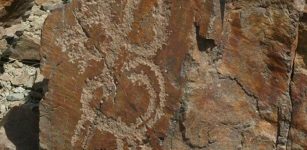 Petroglyphs Hold Secrets To 14,000 Years Of Human Life In Iran
Archaeology | Apr 30, 2020
Petroglyphs Hold Secrets To 14,000 Years Of Human Life In Iran
Archaeology | Apr 30, 2020 -
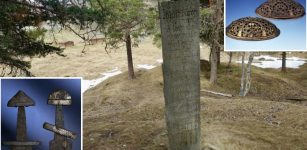 Disgusting Vandalism And Looting Of Viking Graves In Norway
News | Nov 6, 2020
Disgusting Vandalism And Looting Of Viking Graves In Norway
News | Nov 6, 2020 -
 A 1,500-Year-Old Basilica Re-Emerged Due To Withdrawal Of Waters From Lake Iznik
Archaeology | Sep 12, 2020
A 1,500-Year-Old Basilica Re-Emerged Due To Withdrawal Of Waters From Lake Iznik
Archaeology | Sep 12, 2020 -
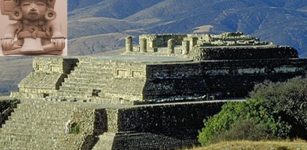 Hidden Structure Detected In Monte Albán, Ancient Metropolis Of Mexican Zapotec Culture
Archaeology | Dec 3, 2020
Hidden Structure Detected In Monte Albán, Ancient Metropolis Of Mexican Zapotec Culture
Archaeology | Dec 3, 2020 -
 Unusual Ancient Skull Found In Chan Hol Underwater Cave Reveals Early American Settlers Were Morphologically Different
Archaeology | Feb 6, 2020
Unusual Ancient Skull Found In Chan Hol Underwater Cave Reveals Early American Settlers Were Morphologically Different
Archaeology | Feb 6, 2020 -
 Cyrus The Great Cylinder – Legacy Of The Ancients
Artifacts | Aug 25, 2015
Cyrus The Great Cylinder – Legacy Of The Ancients
Artifacts | Aug 25, 2015 -
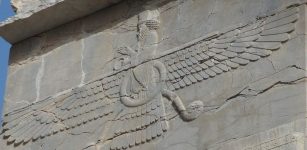 Winged Sun Disk: One Of The Oldest And Most Important Solar And Religious Symbols
Ancient Symbols | Mar 15, 2019
Winged Sun Disk: One Of The Oldest And Most Important Solar And Religious Symbols
Ancient Symbols | Mar 15, 2019 -
 Roman Leather Toy Mouse Found At Vindolanda
Archaeology | Jun 6, 2023
Roman Leather Toy Mouse Found At Vindolanda
Archaeology | Jun 6, 2023 -
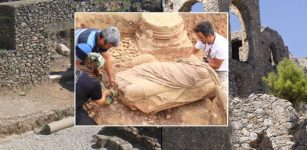 Roman-Era Female Statue Dated Back To 1,800 Years Ago Unearthed In Anemurium, Türkiye
Archaeology | Nov 14, 2023
Roman-Era Female Statue Dated Back To 1,800 Years Ago Unearthed In Anemurium, Türkiye
Archaeology | Nov 14, 2023 -
 Attempt To Smuggle Three Artefacts From Alexandria Port – Failed
Artifacts | Oct 28, 2020
Attempt To Smuggle Three Artefacts From Alexandria Port – Failed
Artifacts | Oct 28, 2020 -
 Biblical Vineyard Of Naboth Existed And Has Been Found
Archaeology | Aug 3, 2017
Biblical Vineyard Of Naboth Existed And Has Been Found
Archaeology | Aug 3, 2017 -
 Are These Puzzling Rings Finger Loops From Ancient Weapon Systems?
Archaeology | May 24, 2023
Are These Puzzling Rings Finger Loops From Ancient Weapon Systems?
Archaeology | May 24, 2023 -
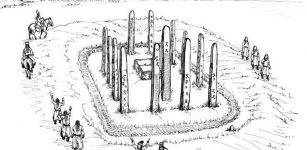 Discovery Of Ancient Sarcophagus And 14 Stone Pillars Covered With Inscriptions In Eastern Mongolia
Archaeology | Dec 22, 2017
Discovery Of Ancient Sarcophagus And 14 Stone Pillars Covered With Inscriptions In Eastern Mongolia
Archaeology | Dec 22, 2017

